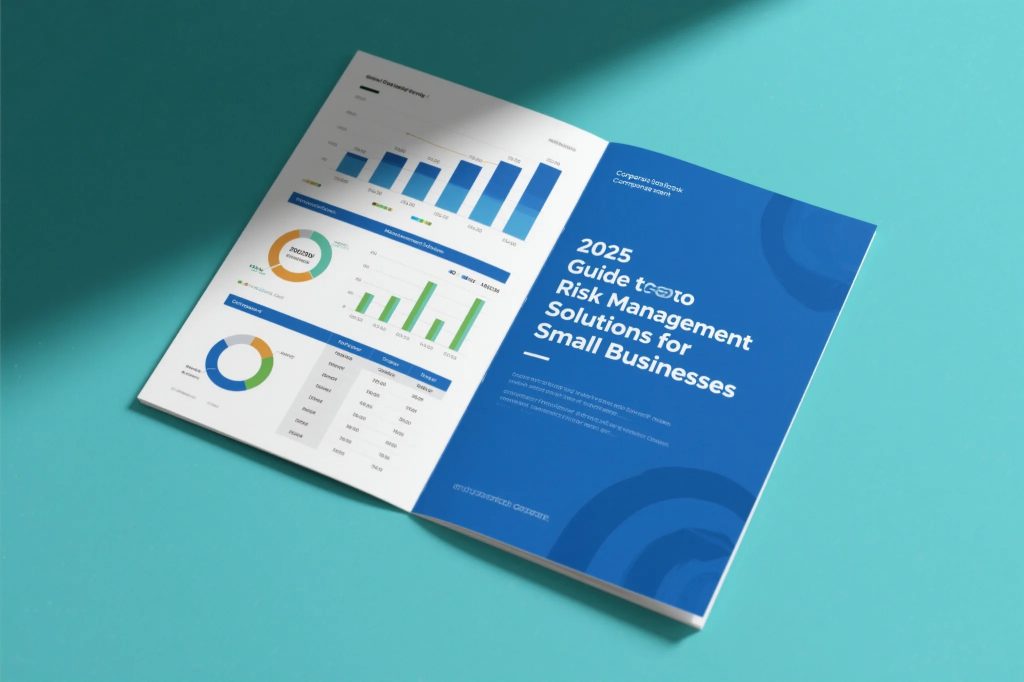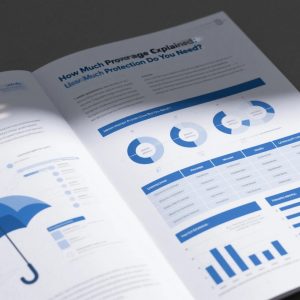The Evolving Landscape of Small Business Risks in 2025
Modern entrepreneurs face an increasingly complex web of threats that demand sophisticated risk management solutions. The post-pandemic business environment has introduced novel challenges ranging from supply chain vulnerabilities to cyber threats that evolve faster than many small businesses can adapt. Physical risks haven’t disappeared either – severe weather events continue disrupting operations with growing frequency. What’s changed most dramatically is the speed at which a minor incident can escalate into an existential threat thanks to social media amplification and changing legal landscapes. The businesses thriving in this environment aren’t necessarily those that avoid all risks, but rather those that implement intelligent systems to identify, assess, and mitigate potential dangers before they materialize.
Effective small business protection in 2025 requires understanding how traditional and emerging risks intersect. A data breach, for instance, no longer just threatens your digital assets – it can trigger regulatory fines, civil lawsuits, and reputational damage that sinks customer trust. Similarly, what begins as an employee dispute can spiral into workplace liability claims, social media backlash, and talent retention problems. The most forward-thinking business owners now approach risk management holistically, recognizing how vulnerabilities in one area can cascade through their entire operation. This systemic understanding forms the foundation for building resilient organizations capable of weathering unexpected storms while seizing growth opportunities that more risk-averse competitors miss.
Comprehensive Insurance Strategies for Modern Threats
The cornerstone of any robust protection plan remains appropriate business risk coverage, though the policies that worked in 2020 may leave dangerous gaps today. Standard general liability policies often fail to address emerging threats like deepfake fraud, AI-related claims, or climate change-related business interruptions. Savvy business owners now combine traditional policies with specialized endorsements creating customized safety nets. Cyber liability coverage has transitioned from optional to essential, with many clients and vendors requiring proof of such protection before conducting business. Similarly, product liability limits need reevaluation in light of recent massive jury awards that could easily surpass older policy maximums.
Innovative insurers now offer bundled risk management solutions that combine coverage with proactive prevention services. These might include regular cybersecurity audits, employment practices training, or onsite safety consultations – all aimed at reducing claim frequency while improving overall operational resilience. The most cost-effective approach often involves working with a specialty broker who understands your industry’s unique risk profile rather than opting for generic online policies. Particularly for businesses with physical locations, reviewing premises liability coverage annually has become crucial as plaintiff-friendly legal trends continue driving up settlement amounts for slip-and-fall type claims that were once considered minor nuisances.
Legal Risk Mitigation in an Increasingly Litigious Era
The explosion of class action lawsuits and regulatory actions makes liability mitigation essential for survival in many industries. Simple oversights like improperly worded return policies or employee handbook clauses now regularly trigger six-figure legal battles. The most effective protection combines comprehensive insurance with preventative legal maintenance – annual reviews of contracts, policies, and disclosures by specialists familiar with your sector’s litigation trends. Many businesses unwittingly create liability through outdated website terms of service, non-compliant customer data practices, or employee classification errors that surface during disputes.
Proactive small business protection against legal threats requires understanding where plaintiffs’ attorneys are finding success. Recent years have seen surges in Americans with Disabilities Act (ADA) website compliance lawsuits, wage-and-hour claims, and allegations of inadequate security leading to data breaches. The plaintiffs’ bar increasingly targets small and midsize businesses precisely because they often lack the sophisticated compliance programs of larger corporations. Implementing simple measures like ADA-compliant web design, documented overtime policies, and encrypted data storage can prevent becoming low-hanging fruit for opportunistic litigation. Perhaps most importantly, maintaining meticulous records creates crucial evidence when defending against spurious claims.

Asset Protection Strategies for the Modern Entrepreneur
In today’s environment where a single lawsuit can jeopardize personal and business assets alike, understanding asset shielding tools has become business essential rather than optional planning. The most effective structures vary by state but often include properly maintained limited liability companies (LLCs), trusts, and strategic retirement account funding. What works for a consulting firm may prove disastrous for a restaurant owner, making customized legal advice invaluable. Many business owners mistakenly believe that simply forming an LLC provides ironclad protection, unaware that courts routinely “pierce the corporate veil” when proper formalities aren’t observed or when personal and business assets are commingled.
The most robust liability mitigation through asset protection involves layering multiple strategies appropriately. This might include operating businesses through separate LLCs, holding real estate in distinct entities, and maintaining adequate insurance across all operations. Equally important is understanding which assets enjoy statutory protections in your state – retirement accounts, primary residences, and certain insurance products often have built-in safeguards against creditors. Timing proves critical too; courts frequently reverse last-minute asset transfers made when liabilities are imminent or already existing. The most effective protection is implemented during periods of financial stability, not as emergency measures when threats materialize.
Cybersecurity in an Age of Sophisticated Threats
Modern risk management solutions must address cyber threats that have grown exponentially more sophisticated and damaging. The average cost of a small business data breach now exceeds $150,000 – a sum that can be catastrophic for operations without proper preparation. Basic antivirus software and password policies no longer suffice against organized cybercrime rings employing artificial intelligence to bypass traditional defenses. The most resilient businesses now implement multi-layered security including employee training, endpoint detection systems, encrypted backups, and incident response plans. Perhaps most importantly, they recognize that cybersecurity isn’t just an IT issue but an organizational priority requiring ongoing attention and investment.
Effective small business protection against digital threats extends beyond prevention to encompass response preparedness. Many states now mandate breach notifications within strict timelines, requiring pre-planned protocols most small operations lack. Cyber insurance policies increasingly require specific security measures as a condition of coverage, making compliance a coverage issue as well as a security one. The businesses best positioned to survive an attack are those that have rehearsed responses, retained legal and forensic specialists in advance, and communicated clear plans to stakeholders. In our interconnected business environment, a vendor’s weak security can become your breach, making third-party risk assessment another crucial component of comprehensive cyber defense.
Workplace Risk Management in Changing Times
The transformed post-pandemic workplace introduces novel liability mitigation challenges that traditional policies often fail to address. Hybrid work arrangements create workers’ compensation gray areas when injuries occur in home offices. Expanded leave laws and accommodation requirements increase compliance complexity. Even company social media policies now carry legal risks if they’re construed as limiting protected speech or concerted activity. The most successful businesses address these challenges through updated handbooks, consistent documentation practices, and management training that goes beyond the standard sexual harassment modules to encompass the full spectrum of modern employment law risks.
Forward-thinking business risk coverage for employment practices now often includes wage-and-hour defense provisions, as these claims have surpassed discrimination allegations in both frequency and severity. Similarly, coverage for third-party harassment claims (involving customers or vendors) has become essential for client-facing businesses. Perhaps most importantly, the best policies now include access to HR consulting hotlines that help prevent claims before they arise – a classic example of how insurance is evolving from pure financial protection to active risk management partnership. Businesses that leverage these resources effectively often see dramatic reductions in both claim frequency and operational disruptions.
Supply Chain and Operational Continuity Planning
Recent global disruptions have made resilient supply chains a critical component of risk management solutions for product-based businesses. The companies that weathered pandemic-related disruptions most effectively weren’t necessarily those with the leanest inventories, but rather those with diversified supplier networks and contingency plans. Modern risk analysis now considers geopolitical factors, climate vulnerabilities, and even transportation bottlenecks when evaluating supply chain robustness. Many businesses have discovered that just-in-time inventory strategies created dangerous single points of failure when global logistics networks faltered.
Comprehensive asset shielding tools for operational risks extend beyond physical inventory to encompass intellectual property protection, key person insurance, and business interruption coverage that accounts for today’s extended recovery timelines. The most thorough plans now include “stress tests” simulating various disruption scenarios to identify unanticipated vulnerabilities. Particularly for manufacturers and distributors, understanding how your coverage applies to goods in transit, at third-party warehouses, or on consignment has become crucial as traditional distribution models evolve. Many policies written before recent supply chain crises contain dangerous gaps for modern operating realities.
Financial Risk Management in Uncertain Economic Times
The volatile economic landscape of 2025 demands sophisticated small business protection against financial shocks that can emerge from multiple directions. Interest rate fluctuations, currency risks for importers/exporters, and customer credit risks all require active management rather than passive hope. The most resilient businesses implement disciplined cash reserve policies, diversified customer bases, and hedging strategies where appropriate. Perhaps most importantly, they maintain flexible cost structures that can adapt quickly to changing economic conditions without compromising operational capacity.
Modern business risk coverage for financial exposures now often includes trade credit insurance protecting against customer insolvencies, a growing concern in uncertain economic times. Similarly, many policies now offer enhanced accounts receivable protection that goes beyond traditional offerings. The most comprehensive financial risk management plans also address less obvious threats like banking partner stability and payment processor risks – vulnerabilities that became painfully apparent during recent regional bank failures. In an era where financial disruptions can spread globally within hours, proactive monitoring and contingency planning have become non-negotiable for financially savvy business owners.
Implementing a Customized Risk Management Framework
Developing effective risk management solutions requires moving beyond generic checklists to create systems tailored to your specific operations, industry, and risk tolerance. The process begins with a thorough risk assessment identifying both obvious and subtle vulnerabilities across all business areas. This diagnostic phase often reveals surprising gaps – a manufacturer might focus on equipment breakdowns while overlooking growing product liability exposures, or a professional firm might obsess over malpractice risks while neglecting cyber vulnerabilities. The most valuable assessments combine internal perspectives with external expert analysis to overcome organizational blind spots.
Successful implementation of liability mitigation strategies requires assigning clear accountability for risk management tasks throughout the organization. Rather than treating protection as an occasional compliance exercise, resilient businesses integrate risk awareness into daily operations through training, performance metrics, and decision-making protocols. Technology plays an increasingly important role, with risk management software now available to help small businesses track exposures, document mitigation efforts, and maintain compliance across multiple regulatory regimes. The most effective systems strike a careful balance between thorough protection and operational flexibility, avoiding the paralysis that can come from excessive risk aversion.
Future-Proofing Your Business Against Emerging Threats
Truly comprehensive small business protection requires looking beyond current threats to anticipate evolving risks on the horizon. Artificial intelligence presents both opportunities and liabilities as businesses incorporate automated decision-making. Climate change continues altering physical risk profiles for properties and supply chains. Evolving privacy laws create new compliance burdens even for small operators. The businesses that will thrive in coming years are those building adaptable risk frameworks capable of addressing known threats while remaining flexible enough to confront unexpected challenges.
The most forward-looking asset shielding tools now consider how technological and legal changes might impact their effectiveness over time. For instance, trusts designed for asset protection increasingly incorporate digital asset management provisions. Insurance buyers now evaluate how policy language addresses AI-related liabilities that didn’t exist when older policies were drafted. Perhaps most importantly, successful business owners recognize that risk management isn’t a one-time project but an ongoing discipline requiring regular review and adaptation as both their business and the external environment evolve. This mindset shift – from seeing protection as a cost center to valuing it as a strategic advantage – separates the businesses that survive from those that thrive in uncertain times.





